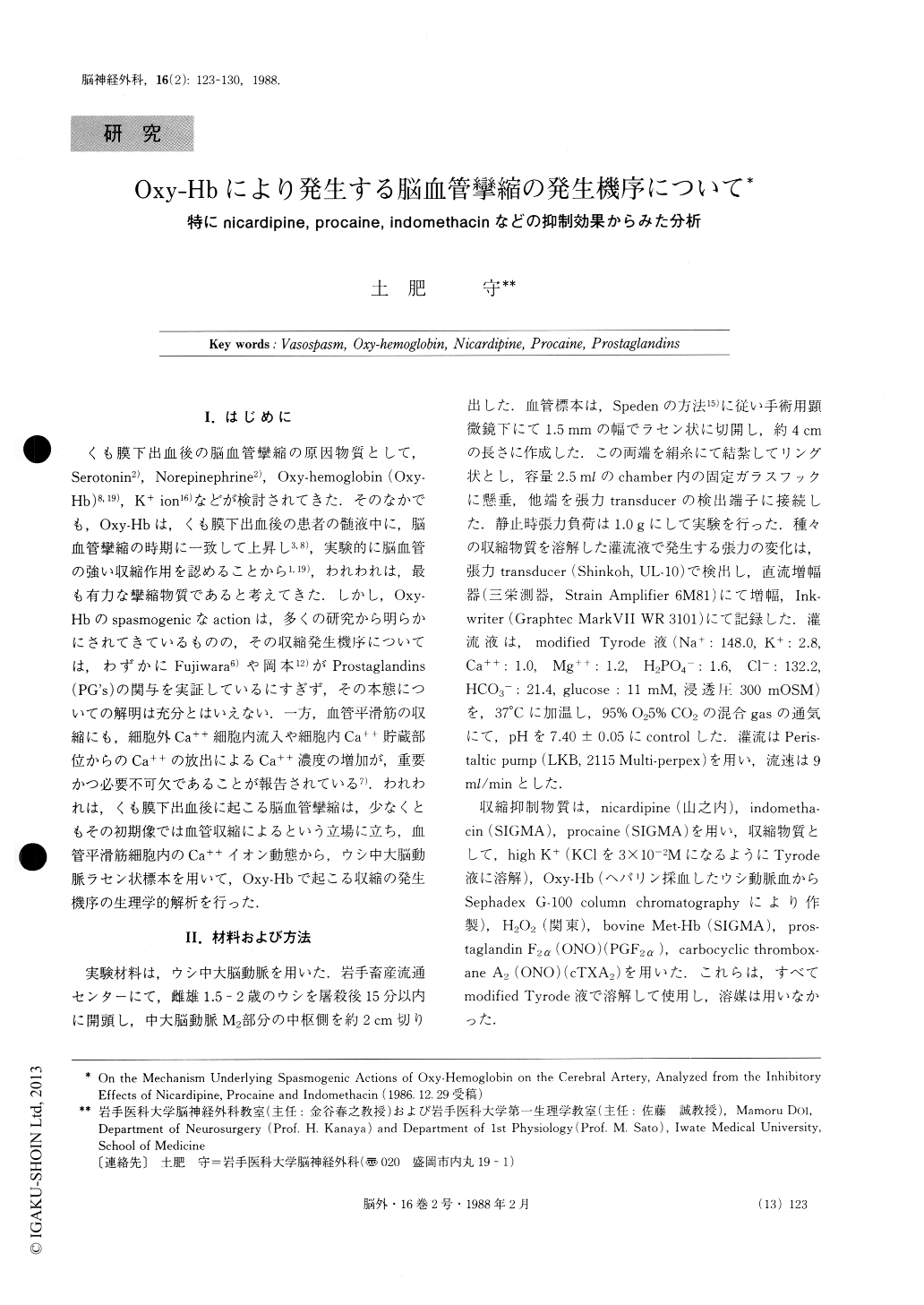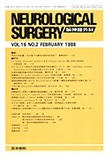Japanese
English
- 有料閲覧
- Abstract 文献概要
- 1ページ目 Look Inside
I.はじめに
くも膜下出血後の脳血管攣縮の原因物質として,Serotonin2),Norepinephrine2),Oxy-hemoglobin(Oxy—Hb)8,19),K+ion16)などが検討されてきた.そのなかでも,Oxy-Hbは,くも膜下出血後の患者の髄液中に,脳血管攣縮の時期に一致して上昇し3,8),実験的に脳血管の強い収縮作用を認めることから1,19),われわれは,最も有力な攣縮物質であると考えてきた.しかし,Oxy—Hbのspasmogenicなactionは,多くの研究から明らかにされてきているものの,その収縮発生機序については,わずかにFujiwara6)や岡本12)がProstaglandins(PG's)の関与を実証しているにすぎず,その本態についての解明は充分とはいえない.一方,血管平滑筋の収縮にも,細胞外Ca++細胞内流入や細胞内Ca++貯蔵部位からのCa++の放出によるCa++濃度の増加が,重要かつ必要不可欠であることが報告されている7).われわれは,くも膜下出血後に起こる脳血管攣縮は,少なくともその初期像では血管収縮によるという立場に立ち,血管平滑筋細胞内のCa++イオン動態から,ウシ中大脳動脈ラセン状標本を用いて,Oxy-Hbで起こる収縮の発生機序の生理学的解析を行った.
The present study was to analyze the basic mechan-ism underlying spasmogenic actions of Oxy-hemoglobin (Oxy-Hb) on the bovine cerebral arteries. Using helical strips of the middle cerebral arteries (M2), the changes in muscular tension during an isometric contraction in-duced by either Oxy-Hb, hydrogen peroxide (H2O2), high potassium-ion-Tyrode (30 mM K+), prostaglandin F2α (PGF2α ), or carbocyclic thromboxane A2 (cTXA2 were recorded on the polygraph. Blocking effects of nicardipine, procaine indomethacin were compared on the contractions produced by each reagent described above.

Copyright © 1988, Igaku-Shoin Ltd. All rights reserved.


